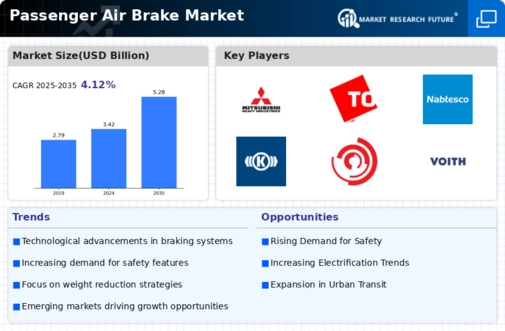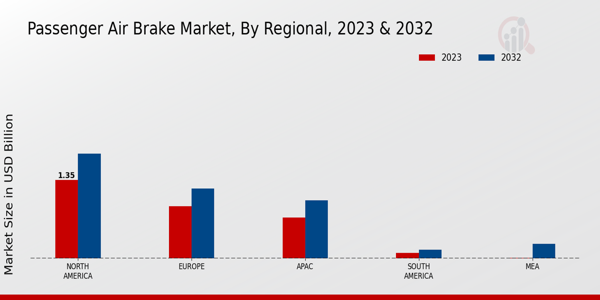The Passenger Air Brake Market is characterized by a dynamic competition among various players aiming to innovate and improve braking technologies for enhanced safety, efficiency, and reliability in rail transport. As the global emphasis on sustainable transportation grows, the demand for advanced air brake systems that meet stringent regulatory standards continues to rise.
Companies in this market strive to leverage new technologies, research, and partnerships to expand their market presence and trust among consumers.
A competitive landscape is formed by the aggressive strategies adopted by leading manufacturers, including investment in research and development and the pursuit of strategic collaborations, aiming to develop state-of-the-art solutions to address contemporary challenges in passenger rail safety and performance.
Alstom has established a significant presence in the Passenger Air Brake Market, leveraging its strong legacy in rail transport solutions. The company is well-regarded for its commitment to innovation and quality, ensuring that its air brake systems integrate seamlessly with modern rail vehicles while adhering to international safety standards.
Alstom's extensive experience in the field allows it to develop tailored solutions that cater to diverse customer requirements, thereby strengthening its competitive edge. The company's robust supply chain management and strategic partnerships further enhance its ability to deliver high-performance passenger air brakes.
Alstom's proactive approach to embracing emerging technologies, such as digitalization and automation, positions it favorably in a rapidly evolving market, allowing it to address customer needs effectively while maintaining leadership status.
Mechanical Engineering specializes in providing advanced engineering solutions for the Passenger Air Brake Market, focusing on the development and manufacturing of high-quality brake components. Known for its technical expertise and innovation, Mechanical Engineering has garnered a reputation for producing reliable and efficient braking systems that improve overall operational safety for rail vehicles.
The company emphasizes research and development, which enables it to stay ahead of technological advancements and evolving regulatory requirements. By concentrating on performance optimization and durability, Mechanical Engineering aims to deliver top-tier products that meet the increasing demands of the passenger rail industry.
Its strategic positioning in this niche market has enabled it to cater to various global customers, reinforcing its operational capabilities and market viability.





















